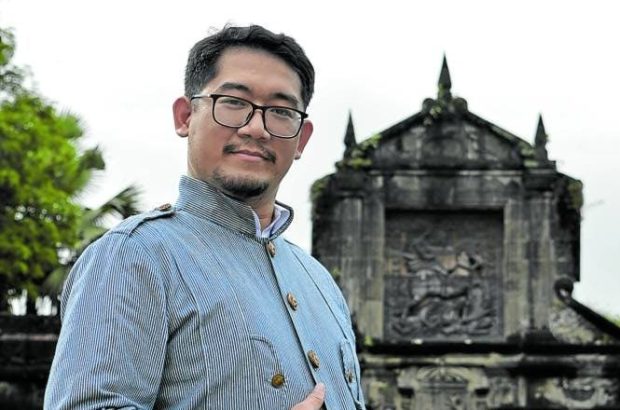The Manila of today hardly looks anything like the Manila of yesterday, when beautiful art deco buildings and Spanish structures told the history of the Philippines the same way that London does. But war, commercialization and, unfortunately, apathy, has led to a Manila that bears almost no similarity to the capital written about in our literature.
But there are those who are fighting to save what’s left of Old Manila, and to educate the future generations of Filipinos of the Manila that was. At the frontline is Renacimiento Manila (Spanish for”Rebirth Manila”) or RM. Officially know as Renacimiento Cultural and Heritage Society of Manila Inc. is a Securities and Exchange Commission-registered cultural organization dedicated to ushering a cultural revival in the city of Manila, explains president, cofounder and executive director Diego Torres.
“It is composed of creators who are all united in their love for Manila’s past, concerned about its present condition, and hopeful for change that could be implemented to better the city’s future.”
Manila ‘s past
Torres, 32, worked at the Intramuros Visitors Center as a tour guide of the Tourism Promotions Division since 2019. As a child, Torres had been exposed to Intramuros and its history by his parents and many visits. “My grandmother, Isabel Crowley Torres, who was born in 1929 and who grew up in prewar Manila, also told me many stories about the city as it was in her youth, including the war years. As I grew up in the internet age, I was able to come into contact with more materials about Manila’s past.”
In December 2019, he met Bea Dolores who was an architecture student from Mapua University and the two put their heads together and out popped RM. On Jan. 16, 2020, they launched the Facebook RM, which was the official start, and the subsequent pandemic gave them a chance to focus on creating content for the page and its cause.
Every member of RM is a volunteer. Interested individuals can message RM through their social media platforms and email, schedule an interview (renacimientomanika.org; email renacimiento.manila@gmail.com; Renaciento Manila on Facebook; @rebirthmanila on Twitter and rebirth.manila on Instagram).
“Members are asked to contribute based on their capacity and time. No contribution is too small for our cause so long as we are all moving forward in our advocacy for Manila.”
Cultural revival
They overcame the lockdown but there remain toxic naysayers even within the heritage community or even the internet “who see innovation and youth involvement in heritage as bad or threatening.” The group gets its funding primarily through donations and small fund-raising activities.
“So far, the more regular activities that we do are the Heritage Walks where we charge a small fee for showing people around Manila’s districts,” he notes. “We have also tried approaching City Hall and other city officials for their support in specific activities, and the feedback has been positive in most cases. We were also able to clinch funding for the Digital Manila Project by being given a grant by the National Commission for Culture and the Arts. The output was the completion of several parts of the 3D model of prewar Manila, as well as the mounting of a six-month-long exhibit at the Chinatown Museum, the institution which encouraged us to pass a grant proposal and which was our partner for the exhibit.”

RM’s current projects include: the Digital Manila Project, where they recreate prewar Manila or Commonwealth-period Manila as they plan to further complete parts of Binondo then Intramuros and Quiapo by next year; the Heritage Walks which cover several areas of Manila and at times also have special themes depending on the occasion, done in partnership with local organizations; promoting Manila’s military history, and to this end they have partnered with the Republica Filipina Reenactment Group to conduct monthly drills and trainings of reenactor’s in full 19th-century period uniforms at Fort Santiago.
They are also involved with local partners in the campaign to save Quiapo’s heritage area by declaring the Hidalgo-Bilibid Viejo area as a heritage zone. RM is also involved in the campaign to protect the Pasig River from destructive projects such as the Pasig River Expressway; and they are already preparing for Art’s Month by holding the third Carnaval de las Artes de Manila in February 2023, an artistic or cultural event which is a nod to the Manila Carnival.
Passionate for change
For Torres, their mission is bigger than people think: “The most important part of Renacimiento Manila’s mission is to inspire and move people in order to create actual change in Manila. The cultural revival of Manila will not only be a heritage advocacy thing, it will need the help of everyone and many sectors.”
And for him, Renacimiento Manila means more than anyone can imagine. “Renacimiento for me is the greatest thing that I can leave for the future, not for myself but for future Filipinos,” says Torres.
“I have always believed in the need for action—physical, on the ground, community-changing or transforming actions. We have to go beyond nostalgia, build upon it. We must harness our cultural identity and our history as we move forward. We must work together to generate positive change for the greater good. And that is what we are trying to do in Renacimiento by bringing together those passionate for change and then connecting our organization with allies and related cause-oriented groups already existing.
“I believe that Manila deserves visions for its future that are grand in scale. After all, she is a grand city at par with other great cities of the world. And so long as Manila exists, then she is a city worth fighting for.”

